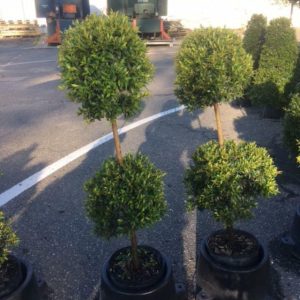Description
Schisandra – Magnolia Vine –
There are 25 twinning, woody, monoecious or dioecious, deciduous or evergreen climbers, in the Schisandraceae family, in this genus. They are found naturally occurring in woodlands in Eeeastern Asia, with one species from Southeastern USA. In China they are used as a sedative. They are grown their cup shaped, red, pink, yellow, or white flowers, borne singly or in clusters or short spikes in the leaf axils, and for their spikes of spherical, brightly colored fruits. Leaves are alternate, smooth or with toothed edges, and usually lance shaped to ovate to elliptic. Both male and female plants of dioecious species must be grown to obtain fruit. Grow over rocks and stumps in woodland, or train on a wall or pergola.
Grow in fertile, moist but well drained soil in full sun or partially shade.
S. rubriflora -This twinning, woody, deciduous, climber from India, Western China and Myanmar reaches 30′ feet high. From slender red shoots it carries lance shaped to narrow elliptic or inversely lance shaped, smooth edged or slightly toothed, dark green leaves, to 5″ long, turning yellow in autumn. Bears solitary, dark crimson flowers, to 1″ across, from late spring to summer, followed, on female plants, by pendent spikes, to 6″ long, of fleshy red fruit.
Zones 7-9





